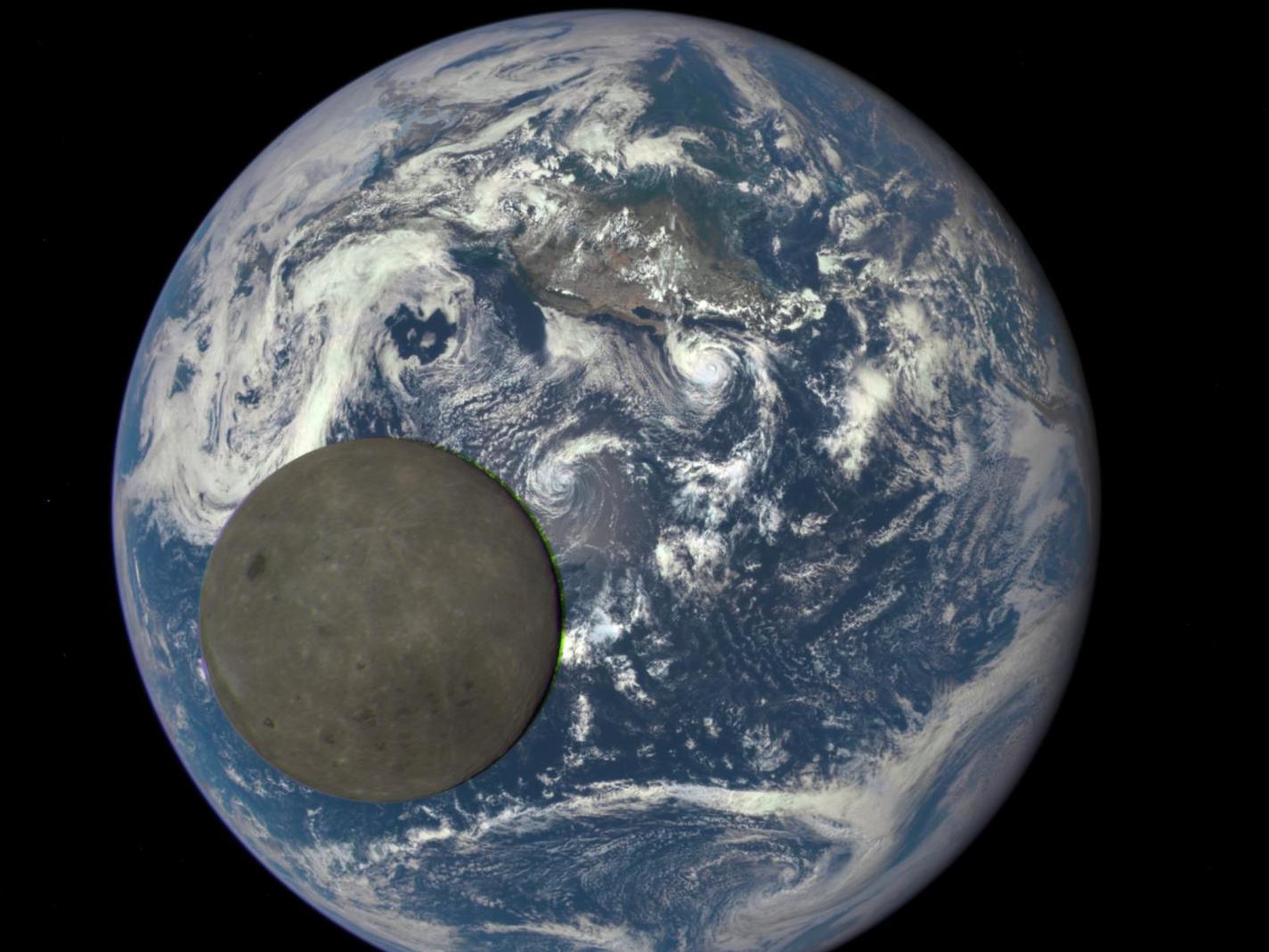Scientists shine light on bizarre formation of the far side of the moon
Uneven distribution of unstable elements after huge interplanetary collision believed to have caused unique scenario affecting moon’s hemispheres

Why is the far side of the moon so different from its familiar Earth-facing side? It is a question which has puzzled scientists since the late 1950s and 1960s, when unmanned space probes photographed the moon’s further reaches for the first time.
They revealed the far side of the moon to be a rugged landscape pockmarked with craters, lacking in the large “maria” or seas on the Earth-facing side of the satellite.
While 30 per cent of the side of the moon we see from Earth is covered with large maria, they make up just 1 per cent of surface on the far side.
Though scientists have long suspected this difference provided clues as to the formation of the moon, new research is shedding fresh light on what happened and why.
Using a combination of observation, laboratory experiments and computer modelling, scientists from the Earth‐Life Science Institute at Tokyo Institute of Technology, the University of Florida, the Carnegie Institution for Science, Towson University, Nasa Johnson Space Centre and the University of New Mexico have discovered new reasons to explain how the moon gained its unexpected asymmetric surface.
Scientists believe the Earth and moon as we know them today formed when a Mars‐sized body collided with the proto‐Earth.
After the huge collision, Earth ended up being the larger remaining body, and a smaller remnant became the moon.
The position of the Earth meant it eventually formed in a sweet spot in terms of its size being just right for it to become a dynamic planet with an atmosphere and oceans.
Meanwhile the smaller moon did not have sufficient mass to host these characteristics.
This meant the moon couldn’t retain volatile substances like water or the gases which make up our atmosphere, and crucially, it meant it did not retain sufficient internal heat to maintain long‐term planetary volcanism and tectonics.
The new research suggests this collision and the subsequent formation of the two bodies caused a particular distribution of specific radioactive elements.
In particular, a group of elements, known as KREEP – rock enriched in potassium (chemical symbol K), rare‐earth elements (REE, which include cerium, dysprosium, erbium, europium, and other elements which are rare on Earth) and phosphorus (chemical symbol P) – are abundant on the near side of the moon where the maria are, but not on the far side.
The heat from the radioactive decay of these elements can help melt the rocks they are contained in, which may partly explain why they are found together, the researchers said.
However, the KREEP elements, together with other elements present, including uranium and thorium, also lower the melting point of the rock, with direct implications for volcanism. Volcanic activity is directly responsible for shaping the enormous maria on the near side of the moon.

The scientists said decades of observations have ultimately demonstrated that lunar history was much more dynamic than previously thought, with volcanic activity occurring as recently as one billion years ago, much later than expected, given the age of the moon.
It appears this 50-50 distribution of certain elements and the effect they had on the volcanic activity of the moon have played a significant role in shaping the lunar landscape.
Immediately after the collision, and during the Earth and moon’s early existence together, our planet’s satellite would not have always shown the same side, as it does now.
Gravitational forces exerted by the larger Earth have slowly halted the moon’s rotation to the point where now the same side is always facing us – a phenomenon called tidal locking.
Dr Matthieu Laneuville of the Earth Life Science Institute, and one of the study’s authors, said: “Because of the relative lack of erosion processes, the moon’s surface records geological events from the solar system’s early history.
“In particular, regions on the moon’s near side have concentrations of radioactive elements like uranium and thorium unlike anywhere else on the moon. Understanding the origin of these local uranium and thorium enrichments can help explain the early stages of the moon’s formation and, as a consequence, conditions on the early Earth.”
The results from the study suggest the moon’s KREEP‐enriched maria have influenced lunar evolution since the moon formed, Dr Laneuville said, adding that evidence for these kinds of non‐symmetric, self‐amplifying processes might be found in other moons in our solar system, and may be ubiquitous on rocky bodies throughout the Universe.
The study is published in the journal Nature Geoscience.
Join our commenting forum
Join thought-provoking conversations, follow other Independent readers and see their replies
Comments